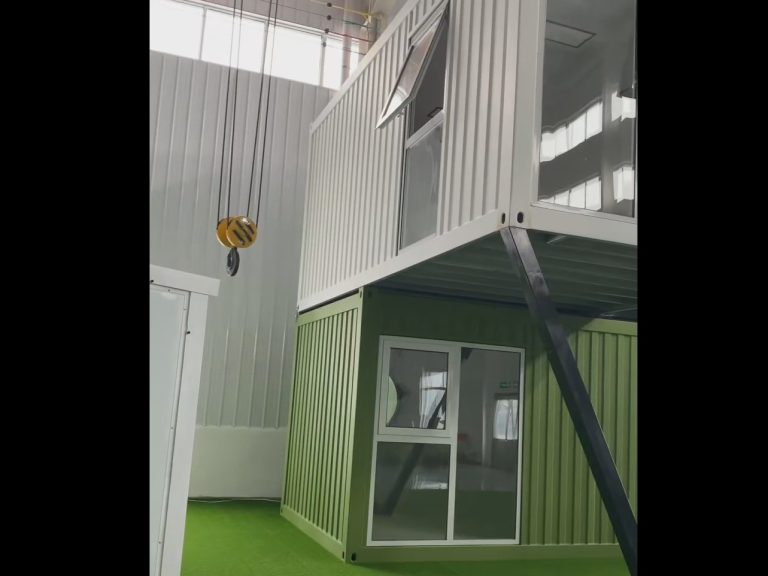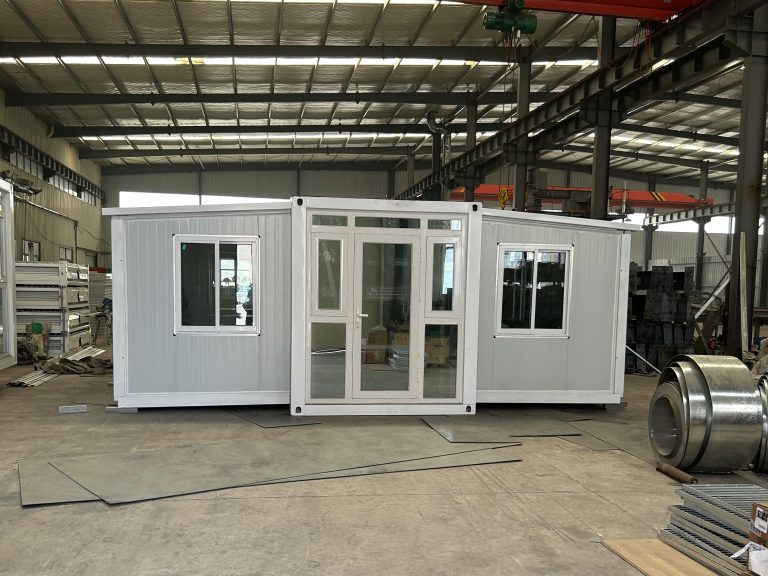Table of Contents
Benefits of Using Container Houses as Temporary Shelters After Natural Disasters
Natural disasters can strike at any moment, leaving communities devastated and in need of immediate shelter. In these situations, container houses have proven to be a valuable solution for providing temporary housing to those affected by the disaster. These structures, made from repurposed shipping containers, offer a range of benefits that make them an ideal choice for emergency housing.

One of the primary advantages of using container houses as temporary shelters after natural disasters is their durability. Shipping containers are designed to withstand harsh conditions, making them well-suited for withstanding the elements in the aftermath of a disaster. Their sturdy construction ensures that they can provide safe and secure shelter for those in need, offering protection from the elements and potential hazards.
In addition to their durability, container houses are also quick and easy to set up, making them an efficient solution for providing emergency housing. These structures can be transported to the disaster site and assembled in a matter of days, allowing for rapid deployment of much-needed shelter. This speed and ease of installation are crucial in the immediate aftermath of a disaster when time is of the essence.
Furthermore, container houses are cost-effective compared to traditional housing solutions. Repurposing shipping containers as temporary shelters is a more affordable option than building new structures from scratch. This cost savings allows for more resources to be allocated to other essential needs in the aftermath of a disaster, such as medical care, food, and clean water.
Another benefit of using container houses as temporary shelters is their versatility. These structures can be customized to meet the specific needs of the community they are serving. From basic sleeping quarters to more elaborate living spaces with amenities such as electricity and plumbing, container houses can be adapted to provide comfortable and functional housing for disaster survivors.
Moreover, container houses are environmentally friendly, as they repurpose materials that would otherwise go to waste. By using shipping containers as the building blocks for temporary shelters, communities can reduce their environmental impact and contribute to sustainable practices. This eco-friendly approach aligns with the growing emphasis on sustainability in disaster response and recovery efforts.
In conclusion, container houses offer a range of benefits that make them an ideal choice for providing temporary shelters after natural disasters. Their durability, ease of installation, cost-effectiveness, versatility, and environmental friendliness make them a valuable solution for meeting the urgent housing needs of communities in crisis. By utilizing container houses as temporary shelters, communities can provide safe and secure housing for disaster survivors while also promoting sustainability and efficiency in their response efforts.
Sustainable Design Features of Container Houses for Disaster Relief
Container houses have become a popular choice for providing temporary shelters after natural disasters. These structures are not only cost-effective but also environmentally friendly, making them a sustainable solution for disaster relief efforts. In this article, we will explore the sustainable design features of container houses that make them ideal for providing shelter in the aftermath of a natural disaster.
One of the key sustainable design features of container houses is their use of recycled materials. Shipping containers that are no longer in use are repurposed to create these structures, giving them a second life and reducing the amount of waste that ends up in landfills. By using recycled materials, container houses help to minimize the environmental impact of disaster relief efforts and promote a more sustainable approach to rebuilding communities.
In addition to using recycled materials, container houses are also designed to be energy-efficient. These structures can be outfitted with insulation, solar panels, and other energy-saving features to reduce their carbon footprint. By incorporating energy-efficient design elements, container houses help to lower energy consumption and decrease reliance on non-renewable resources, making them a more sustainable option for disaster relief housing.
Furthermore, container houses are designed to be easily transportable and assembled, making them a practical choice for providing shelter in remote or hard-to-reach areas. These structures can be quickly deployed and set up, allowing relief organizations to respond swiftly to disasters and provide much-needed housing to those affected. By streamlining the construction process, container houses help to minimize the environmental impact of disaster relief efforts and ensure that resources are used efficiently.
Another sustainable design feature of container houses is their durability and longevity. Made from steel, these structures are built to withstand harsh weather conditions and can last for decades with minimal maintenance. By creating durable housing solutions, container houses help to reduce the need for frequent rebuilding and promote a more sustainable approach to disaster relief efforts.
In conclusion, container houses are an innovative and sustainable solution for providing temporary shelters after natural disasters. With their use of recycled materials, energy-efficient design features, ease of transport and assembly, and durability, these structures offer a practical and environmentally friendly option for disaster relief housing. By incorporating sustainable design principles into their construction, container houses help to minimize the environmental impact of disaster relief efforts and promote a more sustainable approach to rebuilding communities. As the frequency and intensity of natural disasters continue to rise, container houses will play an important role in providing safe and sustainable shelter to those in need.






